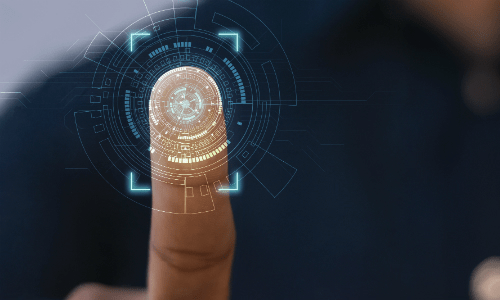
10.16.20 – SSI – That’s the latest projection from ABI Research, which says governmental budgetary restrictions, a shift in commercial investments and hygiene are to blame.
NEW YORK — Global fingerprint biometric device revenues are expected to fall 22%, or $1.8 billion, to $6.6 billion in 2020 due to the ongoing coronavirus pandemic, according to a recent report from global tech market advisory, ABI Research.
The entire biometrics market, however, is forecast to regain momentum in 2021 and is expected to reach approximately $40 billion in total revenues by 2025.
Dimitrios Pavlakis, a digital security industry analyst at ABI, explains the current decline in the biometrics market landscape stems from multifaceted challenges from a governmental, commercial and technological nature. In a press release he comments:
“First, they have been instigated primarily due to economic reforms during the crisis which forced governments to constrain budgets and focus on damage control, personnel well-being, and operational efficiency. Governments had to delay or temporarily cancel many fingerprint-based applications related to user/citizen and patient registration, physical access control, on-premise workforce management, and certain applications in border control or civil, welfare, immigration, law enforcement, and correctional facilities.
Second, commercial on-premise applications and access control suffered as the rise of the remote workers became the new norm for the first half of 2020. Lastly, hygiene concerns due to contact-based fingerprint technologies pummelled biometrics revenues forcing a sudden drop in fingerprint shipments worldwide.”
Not all is bleak, Pavlakis says. New use-case scenarios have emerged, and certain technological trends have risen to the top of the implementation lists. For example, enterprise mobility and logical access control using biometrics as part of multifactor authentication (MFA) for remote workers.
“Current MFA applications for remote workers might well translate into permanent information technology security authentication measures in the long term,” he says. “This will improve biometrics-as-a-service [BaaS] monetization and authentication models down the line.”
Biometrics applications can now look toward new implementation horizons thanks to innovations being driven by several leading technology providers. “Future smart city infrastructure investments will now factor in additional surveillance, real-time behavioral analytics, and face recognition for epidemiological research, monitoring, and emergency response endeavors,” Pavlakis concludes.
These findings are from ABI Research’s Biometric Technologies and Applications market data report.
